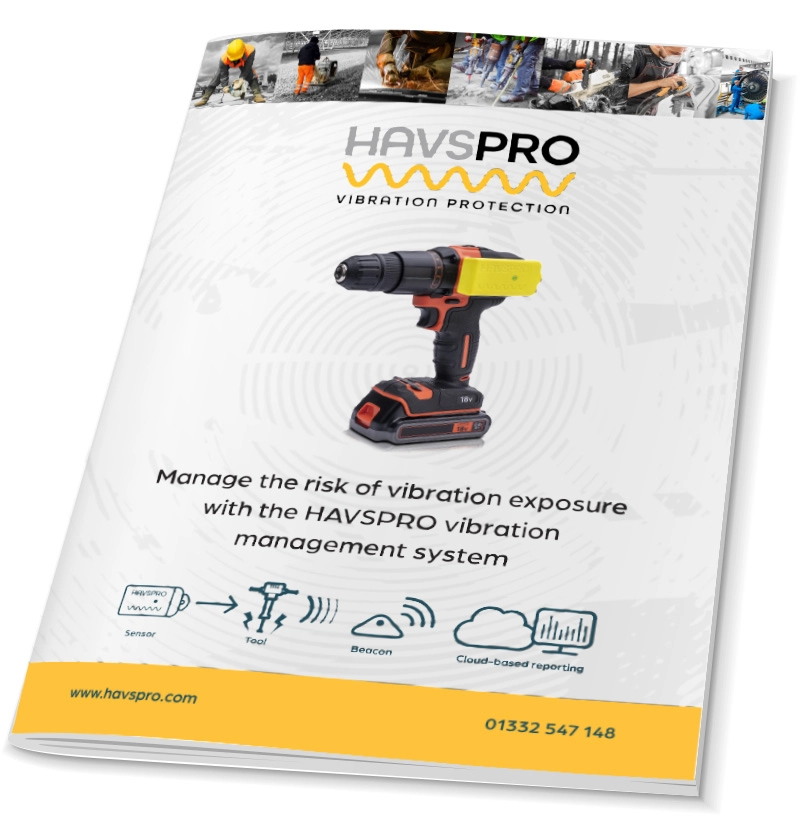HAVS, (Hand Arm Vibration Syndrome) is a permanent and painful condition that causes numbness and tingling in the hands and arms, also painful joints and muscle weakening. The symptom progression can be subtle and gradual, it is therefore imperative that the operators are aware of the condition symptoms as it can be difficult to detect until it’s too late. Making this a definite case of prevention being better than a cure.
If you or any of your employees work with vibrating equipment, its vital that you are aware of the exposure limits in place to protect people working with vibrations and know what the legal exposure limits are so you can remain within the law, protect your health and avoid significant fines.
What are the HAVS Exposure Limits?
The legally established thresholds for daily vibration exposure are to protect employees and prevent HAVS, they are defined in L140, The Control of Vibration at Work Regulations. These limits are referred to as the Exposure Limit Value (ELV) and the Exposure Action Value (EAV).
The regulations state that 2.5ms2 for 8 hours = EAV and 5ms2 = ELV….but we have to report in HSE points, therefore EAV = 100 HSE points whilst ELV = 400HSE points.
What we really need to be aware of is that these are the maximum values, we should start out with these values and then reduce to As Low As Reasonably Practicable (ALARP)
The Control of Vibration at Work Regulations 2005 Exposure limit values and action values
EAV (Exposure Action Value)
The first exposure limit you will hit is the Exposure Action Value (EAV). Whilst it may be viewed as not being a limit in the sense that you cannot go through it, it is a value after which you must take action. All too often operators exceed their EAV with the action being ignored, ‘’its only EAV, ELV is the limit’’ is often heard.
Continually hitting and ignoring EAV is dangerous for the operator and your business. Your RAMS should be mindful of EAV.
So, if your vibration exposure exceeds the action value, you need to take action. You can find out more about what this action might look like in our HAVS EXPOSURE LIMITS blog [https://www.havspro.com/havs-exposure-limits-eav-elv-and-what-they-mean/]
ELV (Exposure Limit Value)
The upper HAVS exposure limit is the exposure limit value (ELV). This one really is THE limit; you are legally not allowed to exceed it. The regulations are clear that the exposure limit value (ELV) must not be exceeded, and if it is, work should stop, and action should be taken to prevent the limit from being exceeded again. HAVS can be contracted in a very short space of time, as little as 6 months, early intervention is needed if we are to #makehavshistory.
ALARP – What does it mean?
The ALARP (As Low As Reasonably Practicable) principle has been defined by the United Kingdom Health and Safety Executive (UK HSE) [1] to depict the concept that efforts to reduce risk should be continued until the incremental sacrifice in doing so is grossly disproportionate to the value of the incremental risk reduction achieved (see figure). Incremental sacrifice is defined in terms of time, effort, cost or other expenditure of resources [2]. Usually, each incremental reduction in risk will require a greater expenditure of resources.
What’s the solution to for accurately monitoring and reporting of HAVS?
At HAVSPRO, we’ve created what we, and many of our partners, believe to be the solution for accurate vibration monitoring and effective managing of risks. We’ve developed a tool-mounted, measuring, monitoring and cloud-based reporting system that is adaptable to different tools, environments and usage durations to provide employers with a highly accurate way of monitoring, managing and reducing the vibration risks to their employees.
If you’d like to find out more about HAVSPRO, HAVS Exposure Limits, or how our system works and the benefits it can bring to your business, download our brochure below, or contact us.



